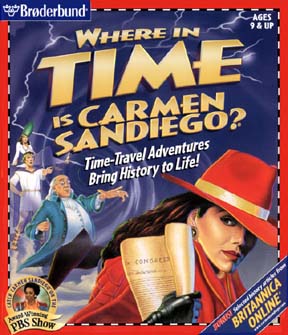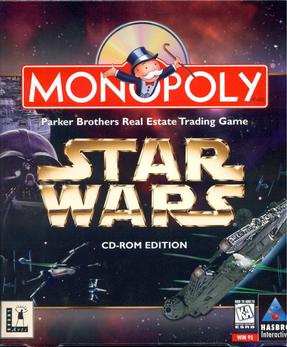
Pandemonium! is a 1996 platform video game developed by Toys for Bob and published by Crystal Dynamics for the PlayStation, Sega Saturn, Microsoft Windows, N-Gage, mobile and iOS. Pandemonium! features Fargus, a joker, and Nikki, a sorceress, who unwittingly casts a spell that destroys the town. The goal of the game is to reach the Wishing Engine, where they can wish the town back to normal. For each level, the player can choose which character to be. Each has a special move – Fargus can deliver a special spinning attack, and Nikki can double jump. The game consists of a great variety of unique gameplay objects, such as watermelons, clouds, spider webs and logs. A sequel, Pandemonium 2, was released in 1997 for PlayStation and Microsoft Windows.
Courtland Robert Mead is an American former actor, noted for his performances as a child actor during the 1990s.
Engineering Animation, Inc., or EAI, was a services and software company based in Ames, Iowa, United States. It remained headquartered there from its incorporation in 1990 until it was acquired in 2000 by Unigraphics Solutions, Inc., now a subsidiary of the German technology multinational Siemens AG. During its existence, EAI produced animations to support litigants in court, wrote and sold animation and visualization software, and developed a number of multimedia medical and computer game titles. Part of EAI's business now exists in a spin-off company, Demonstratives.

Maui Mallard in Cold Shadow – originally released as Donald in Maui Mallard – is a platforming video game developed and published by Disney Interactive Studios. The game was released in Europe on December 8, 1995, and in Brazil in spring 1997 for the Sega Mega Drive. It was also ported by Eurocom Entertainment Software to the SNES and released in North America in January 1997, in Europe mostly in autumn 1996, and in Japan on December 20, 1996. A Microsoft Windows port was released in North America in November 1996. It was ported one last time to the Game Boy by Bonsai Entertainment Corp., released in North America in August 1998.

Living Books is a series of interactive read-along adventures aimed at children aged 3–9. Created by Mark Schlichting, the series was mostly developed by Living Books for CD-ROM and published by Broderbund for Mac OS and Microsoft Windows. Two decades after the original release, the series was re-released by Wanderful Interactive Storybook for iOS and Android.

MovieCD is a format for digital video storage and consumer home video playback released in 1996 by Sirius Publishing, and was rendered obsolete by the wider distribution of DVD. It used a video codec called MotionPixels, marketed by MotionPixels, Inc., a subsidiary of Sirius Publishing. It was used in many third-party video games from the mid to late-1990s, and during the same time on Sirius's MovieCDs that it had been originally developed for, enjoying an international distribution in both forms.
There have been a variety of Sesame Street video games released for video game platforms. Most of the Sesame Street video games were published and developed by NewKidCo.
Creative Capers Entertainment is an American animation studio founded by Terry and Sue Shakespeare with David Molina in 1989. Based in Altadena, California, it specializes in Flash and hand-drawn animation in various feature films, television series, commercials, CD-ROMs and video games.

The American Girls Premiere is an educational computer game developed and published by The Learning Company for American Girl. The game allows players to create theatrical productions featuring characters from American Girl's Historical collection, along with scenes and other elements unique to each of the girls' respective time periods.
William "Bill" Appleton is an American entrepreneur and technologist best known as the programmer of the first rich media authoring tool World Builder, the multimedia programming language SuperCard, a best-selling CD-ROM Titanic: Adventure Out of Time, the DreamFactory REST API platform, and Snapshot Org Management for Salesforce.

Carmen Sandiego's Great Chase Through Time is a 1997 edutainment point-and-click adventure game developed by Broderbund for Microsoft Windows and Macintosh devices. The game is a remake of the 1989 time-travel title Where in Time Is Carmen Sandiego?, making it the second Time video game in the Carmen Sandiego franchise. The game was strongly influenced by the short-lived PBS game show, Where in Time Is Carmen Sandiego?. The game was previewed at the 1997 Toy Fair in New York City. A demo version was included on the CD for Carmen Sandiego Word Detective and was available on the Carmen Sandiego website. After Broderbund was sold to The Learning Company, the game was re-released with the new title - Carmen Sandiego's Great Chase Through Time - but with minimal redesign.

Disney's Animated Storybook is a point-and-click adventure interactive storybook video game series based on Walt Disney feature animations and Pixar films that were released throughout the 1990s. They were published by Disney Interactive for personal computers for children ages four to eight years old. Starting from 1994, most of the entries in the series were developed by Media Station. They have the same plots as their respective films, though abridged due to the limited medium.

Disney's Activity Center is a series of PC and PlayStation games released by Disney Interactive with each title consisting of various activities and minigames to be completed, using aspects of their licensed property.
Madeline is a series of educational point-and-click adventure video games which were developed during the mid-1990s for Windows and Mac systems. The games are an extension of the Madeline series of children's books by Ludwig Bemelmans, which describe the adventures of a young French girl. The video-game series was produced concurrently with a TV series of the same name, with characters and voice actors from the show.

Disney Learning: Winnie the Pooh comprises three titles: Winnie The Pooh Toddler, Winnie the Pooh Preschool and Winnie The Pooh Kindergarten. They are point-and-click educational video games developed and published by Disney Interactive and based on the Winnie the Pooh franchise. The titles were shipped by BAM! Entertainment.

Monopoly Star Wars is the 1997 Monopoly Star Wars video game based on the board game and set in the Star Wars fictional universe. It is one of many Monopoly video game adaptions. The game was developed by Artech Studios and published by Hasbro Interactive. It was released exclusively for Microsoft Windows computers. The game employs the same basic ruleset of traditional Monopoly gameplay, but the Star Wars theme includes famous characters and locales in place of the original game pieces and properties.

Reader Rabbit's Interactive Reading Journey is a 1994 video game released on the Windows and Macintosh systems. It is the sixth game in the Reader Rabbit franchise. Designed for ages 4 till 7, the game introduces the new main characters Mat the Mouse and Sam the Lion who accompany Reader. It was then re-released in 1997 under the title "Reader Rabbit's Interactive Reading Journey For Grades K-1", followed by another in 1998 titled "Reader Rabbit's Reading Ages 4–6" and a personalized version in 1999.

Rugrats Adventure Game is an educational adventure point and click video game based on the Rugrats television series released for Microsoft Windows and Macintosh on September 30, 1998. It was developed and published by Broderbund. The game follows Tommy Pickles and friends Chuckie, Phil, and Lil as they try to rescue Tommy's beloved toy Reptar from being thrown out as garbage. The game incorporates point and click gameplay, with characters and objects appearing in different locations even after the player has visited them once. Angelica, the series' main antagonist, appears in the game to help further the story and ultimately become the game's main villain.
KinderVentures is a series of classroom software and multisensory programs developed in the 1990's by Optical Data Interactive.

Nightmare Ned is an American animated television series which ran from April 19 to July 5, 1997, on ABC. The show was produced by Walt Disney Television Animation and Creative Capers Entertainment, and created by Terry Shakespeare, G. Sue Shakespeare, and David Molina of Creative Capers Entertainment. The show was based on and developed alongside the computer game of the same name, but the show ended up being completed before the video game was released.













